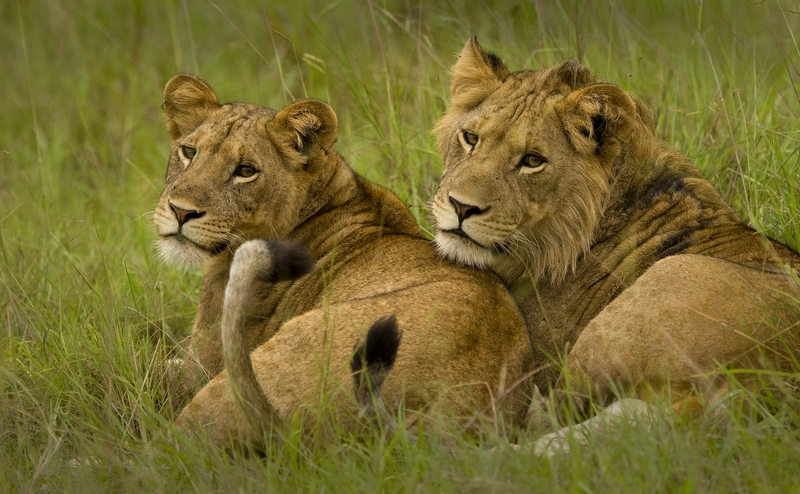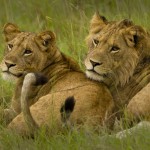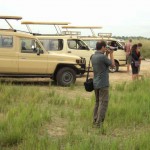
History; The history of Queen Elizabeth national park is fascinating. In the first quarter of the 1990’s in 1925, a department was set up to stop the Elephants from marauding villages and destroying cultivation- the overall aim being to keep the within certain boundaries, protecting both Elephants and people.
As a result, a series of game reserves, sanctuaries and national parks were established over the years. Across the boarder in Zaire, Parc national des Virunga was designated in 1925 by the Belgian colonial authorities and pressure to protect the adjoining ecosystem in Uganda led to the establishment of L. George game reserve and L. Edward game reserve in the in the late 1920’s.
Several geographic changes followed and later in 1952 it was gazetted into a national park known as Queen Elizabeth national park.
Geography; Since its inception, the protected area has grown. Set in the western rift valley, the park together with the Kyambura and Kigezi wild life reserves covers 2475 square kilometers. Its temperatures range from18oc to 280c. The wettest seasons in this Park are usually incurred in March to May and September to November receiving rains ranging from 750mm to 1250mm with an altitude of 910m above sea level at Lake Edward vicinity to 1,390 m above sea level in the crater area. This place can be best timed from December -February and the tour can be for at least 2-3 days. It has recorded about 95mammal species and 606 bird species.
Biodiversity;
Queen Elizabeth national park encompasses a wide range of habitats ranging from savanna and wetlands to riverine and low land forest. The area is dominantly covered with water and 250 square kilometers of Lake Shores. Lake George, Lake Edward, The Kazinga Channels, Ishasha River and a series of crater lakes provide a rich habitat for both mammal and birds offering a brilliant Uganda wildlife Safari opportunities to visitors. Added to all this is the beautiful scenic spectacular panorama and terrain.
Sir Andrew Cohen was wrote about it that; “the grandest view I have ever seen, looking north from Ankole escarpment, with lakes Edward and George and the Kazinga Channel in the foreground and the whole snow capped range of the Rwenzori as a backdrop.”
The park has 10 primate species, including chimpanzee, black and white colobus monkeys, olive baboons, red tailed monkeys, vervet monkeys. The park also has predators like lion, leopard, spotted hyena, side stripped jackal and also numerous antelope like bush back, water buck, oribi, topi, the shy and semi aquatic sitatunga and four species of duiker. Mammals in this park include; buffalo, elephant, hippo, mangoose.
Activities in Queen Elizabeth national park
Game drives;
Any visitor to Queen Elizabeth national park can be rewarded by a game drive which brings you closer to the park’s marvelous diversity. This is usually done very early in the morning and late in the evening hours. Over 200km of well maintained tracks give visitor access to the park’s game. Some tracks pass through large mating grounds of great herds of Uganda Kob. The slower you drive the more you will see.
Launch trip on The Kazinga channel;
A boat trip along the hippo crowded banks of Kazinga channel gives you a unique unmatched wildlife experience. Gaze at the yawning hippos surrounded by a vast number of bird life. This launch cruise puts you in the right heart of nature. Many buffalo rest in water with crocodiles being a common sight along the shores. Occasionally leopards can also be seen.
Maramagambo Forest.
A variety of short medium and long guided nature walks are offered. Pythons are often observed in the crevices of bats cave floor and these usually prey on bats. More interesting, this cave is near the picturesque Blue lake and hunter’s cave. Other trails lead into the heart of the forest surrounding tranquil Crater Lake sand it is home to many primates including chimpanzee.\
Walks in the Kyambura gorge
This is found in the eastern part of the protected area and supports similar mammals to the rest of the park. It has three crater lakes, which attract large numbers of Flamingoes that are not found any where else in Uganda.
The steep Kyambura gorge formed by the turbulent waters of the roaring Kyambura River provides a lush riverine forest, home to chimpanzees, black and white colobus and red-tailed monkeys, Olive baboons and other primates as well as plenty of forest birds. A guide nature walks takes visitors into the gorge and offers a great chance to track habituated chimpanzee in their natural habitat.
Traditional Salt Work Visit
A visit to one of the oldest salt mines and industries in Uganda is rewarding at the enclave of L. Katwe town. Since the 14th Century, salt has been mined by traditional methods and is still in the use today. Salt production peaks during the dry season.
Game drives in Ishasha.
Ishasha is the true pearl in the southern part of the park. Idyllic campsites frequently visited by Colobus and other monkeys are situated along the winding Ishasha River. The famous tree climbing lions can be spotted on large fig trees in this part of the park. Topi, Uganda Kob and Buffaloes Graze in the Acacia studded savannah.
Bird Watching
Queen Elizabeth boasts 606 bird species. You can encounter them by using experienced guide and they know the most interesting bird spots around swamps, lakes and other interesting habitat. Queen Elizabeth national park offers you a good chance of spotting Uganda’s most sought after bird the prehistoric looking shoe Bill stork! Other key species include; the African fish eagle, martial eagle, papyrus ganolek, African Skimmer and many more. A trip plan for a minimum of 2-3 days gives one the best chance to see these beautiful birds.

 Posted in
Posted in 

